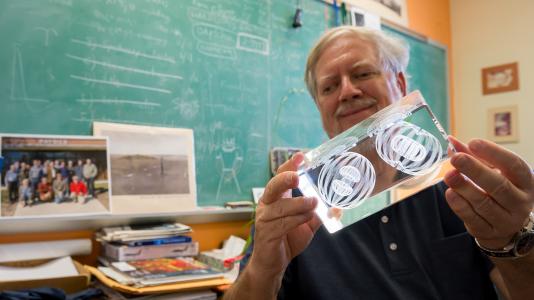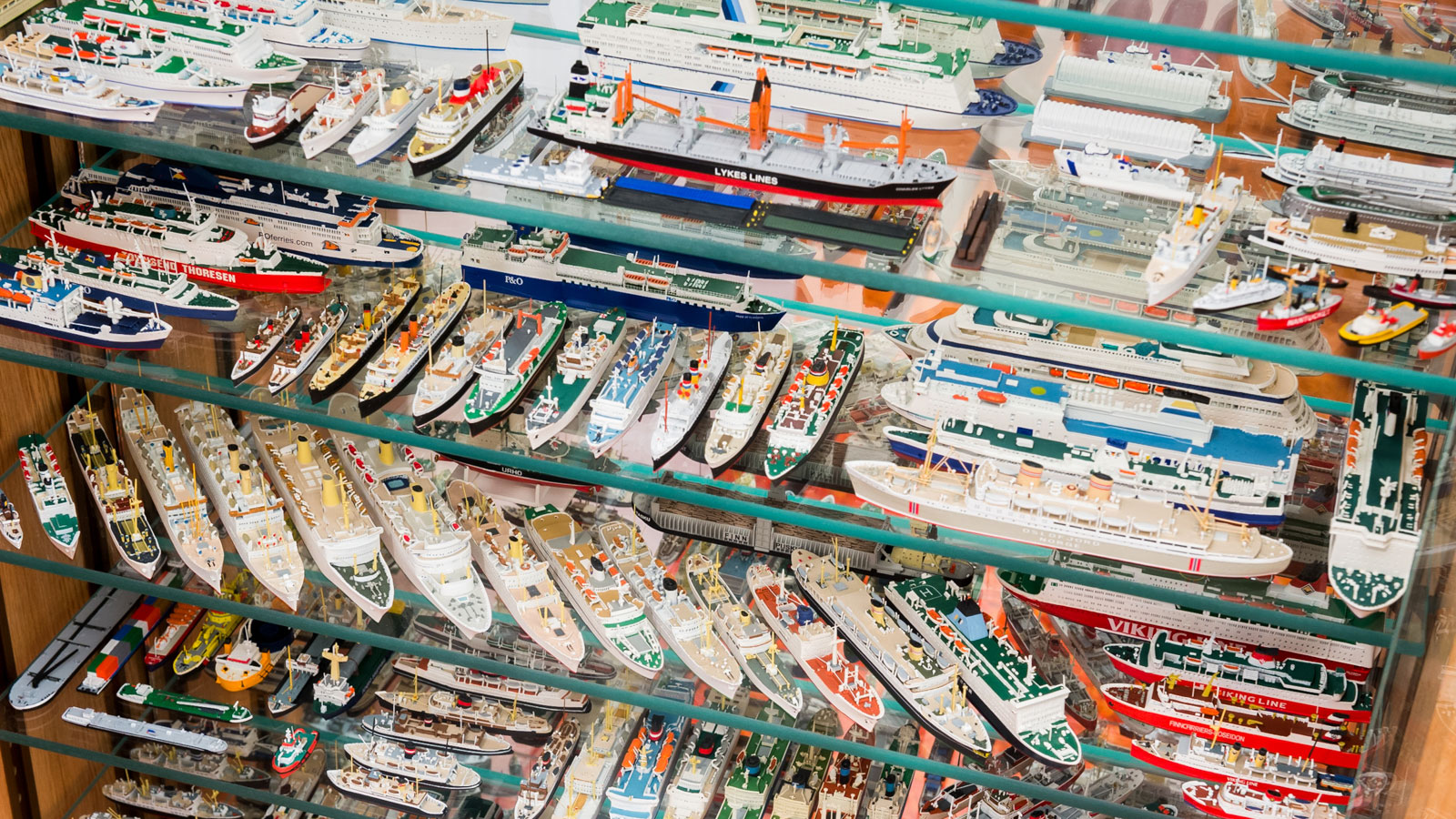
In this series, meet researchers from Argonne with unusual hobbies and interests. Today we’re interviewing Robert Wiringa, a physicist who describes the behavior of atoms and has collected more than 2,000 model ships.
What do you do at Argonne?
I’m in the Physics Division Theory Group, which is nuclear physics, the study of what’s happening inside the nuclei of atoms. I develop models for nucleon-nucleon and three-nucleon interactions. That’s a description of how two or three nucleons, which are protons or neutrons, interact with each other.
What is your hobby?
I collect model ships, mostly military ships, on a scale of 1:1250. That means that one inch of a model is about 100 feet of a real ship. I have collected almost 2,000 ships over 20 years.
How did you start collecting?
I was always interested from childhood in models—one of the things I especially appreciated was when you could have things in the same scale. When I was a teenager I had more than a hundred model airplanes I put together, all in one scale. It gives you an appreciation of how big one thing is relative to another.
How are the models made?
Almost all of them are metal, but a few have been resin-printed. For most of the models someone has a “master” version and a mold from that master, and then they cast as many copies as they can before the mold wears out.
Where did these models come from?
They started out as recognition models. In World War I, all the major navies made these models, and then trained people to determine whether ships on the horizon were “one of theirs or one of ours.” It went further in World War II because then you had to train people who might be sighting from airplanes. After that, people who liked the models started making more and more detailed ones, most of which are made in Germany.
Which are your favorites?
I’m particularly interested in the World War II U.S. Navy, and of all my ships the Franklin D. Roosevelt aircraft carrier is probably my favorite. The model was built by a Frenchman named Alain Picouet; it’s actually a resin, unlike most models, and it came with all of the airplanes attached. It was the most expensive one I bought, but it was worth it.
The British actually led many of the advances in aircraft carriers. They invented three important things: the angled deck, the steam catapult, and the mirror landing system. Then the U.S. Navy took those systems and made them much more practical.
What sorts of things does the model ship community do?
I’m part of a group called the Society of Miniature Ship Collectors that holds annual meetings, and this year we’ll go to Los Angeles to see the Battleship Iowa, and we’ll actually have our meeting on the ship. We’ve been to Norfolk, San Diego, and Hawaii, just to name a few trips.
A friend of mine also wrote a book about the hobby, called Miniature Ship Models, and he asked me to take photos of a few of my models for him.
What’s it like to see the ships in person?
It’s great. They’re huge, just huge. You can see the proportions with models but to actually see it in person is still very different. It’s like looking at a picture of the Grand Canyon versus going to the Grand Canyon.
You also have a website, Bob’s Ship Collection.
By the time I reached around a hundred models I decided I should start my own website to keep track and to learn more details about the ships. A lot of the ships initially were ones that I knew about historically, and then I gradually learned more and more. Now people even use my website as a reference.
I collected a seven-masted schooner, the only one that was ever built, called the Thomas W. Lawson. It was carrying oil to England and foundered in a storm. Only two people survived, and I wrote up in my history “only two survived, Captain George Dow and one other.” Some time later, I got an email from a guy saying “I’m the grandson of the ‘one other.’” So I went back and put in the other name.
A lot of people go looking for some sort of connection, looking for the history of a relative or some feature and they stumble across me.
Argonne National Laboratory seeks solutions to pressing national problems in science and technology. The nation’s first national laboratory, Argonne conducts leading-edge basic and applied scientific research in virtually every scientific discipline. Argonne researchers work closely with researchers from hundreds of companies, universities, and federal, state and municipal agencies to help them solve their specific problems, advance America’s scientific leadership and prepare the nation for a better future. With employees from more than 60 nations, Argonne is managed by UChicago Argonne, LLC for the U.S. Department of Energy’s Office of Science.
The U.S. Department of Energy’s Office of Science is the single largest supporter of basic research in the physical sciences in the United States and is working to address some of the most pressing challenges of our time. For more information, visit the Office of Science website.
